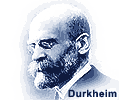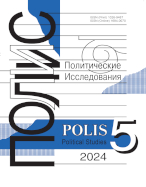Central Asia:
Institutional Structure of International Interactions in a Region in the Making
Kazantzev A.A.,
Principal Researcher, Institute for International Studies, MGIMO University; Professor, HSE University; Principal Researcher, Science and Education Laboratory of political geography and contemporary geopolitics, HSE University, andrka@mail.ru
elibrary_id: 123521 | ORCID: 0000-0002-4845-1391 | RESEARCHER_ID: H-2728-2016
DOI: 10.17976/jpps/2005.02.08
Kazantzev A.A. Central Asia: Institutional Structure of International Interactions in a Region in the Making . – Polis. Political Studies. 2005. No. 2. https://doi.org/10.17976/jpps/2005.02.08
Regarding international region as a complex of objectively existent institutions and of subjective knowledge of them, as well as a combination of regional identities, the author demonstrates that an important component of the process of an international region’s formation is the appearance of international institutions providing regular patterns of interactions between actors. On stating this process in Central Asia he observes that the formation means conflict of contradicting projects and coexistence of mutually exclusive structures, both the former and the latter having not only natural, but also artificial, political-technology or social-engineering dimension. That is, in his opinion, exactly what accounts for the fact that the forms of interactions between different actors on the territory of contemporary Central Asia correspond to none of the classical paradigms of description of the structure of games in international regions.
See also:
Palmowski T., Fedorov G.M.,
Russian-Polish Borderland: Problems and Prospects for the Development of Cross-Border Relations. – Polis. Political Studies. 2020. No2
Zamyatin D.N.,
Geopolitics: Major Problems and Results of Development in the 20th Century. – Polis. Political Studies. 2001. No6
Kiselyov I.Yu.,
The Images of States in International Relations: Mechanisms of Transformation. – Polis. Political Studies. 2003. No3
Sakwa R.,
Back to the Wall: Myths and Mistakes that Made the Ukraine Crisis. – Polis. Political Studies. 2015. No4
Korotayev A.V., Bilyuga S.E., Shishkina A.R.,
Correlation between GDP per Capita and Protest Intensity: a Quantitative Analysis. – Polis. Political Studies. 2017. No2





.jpg)






 print
print
.jpg)
.jpg)